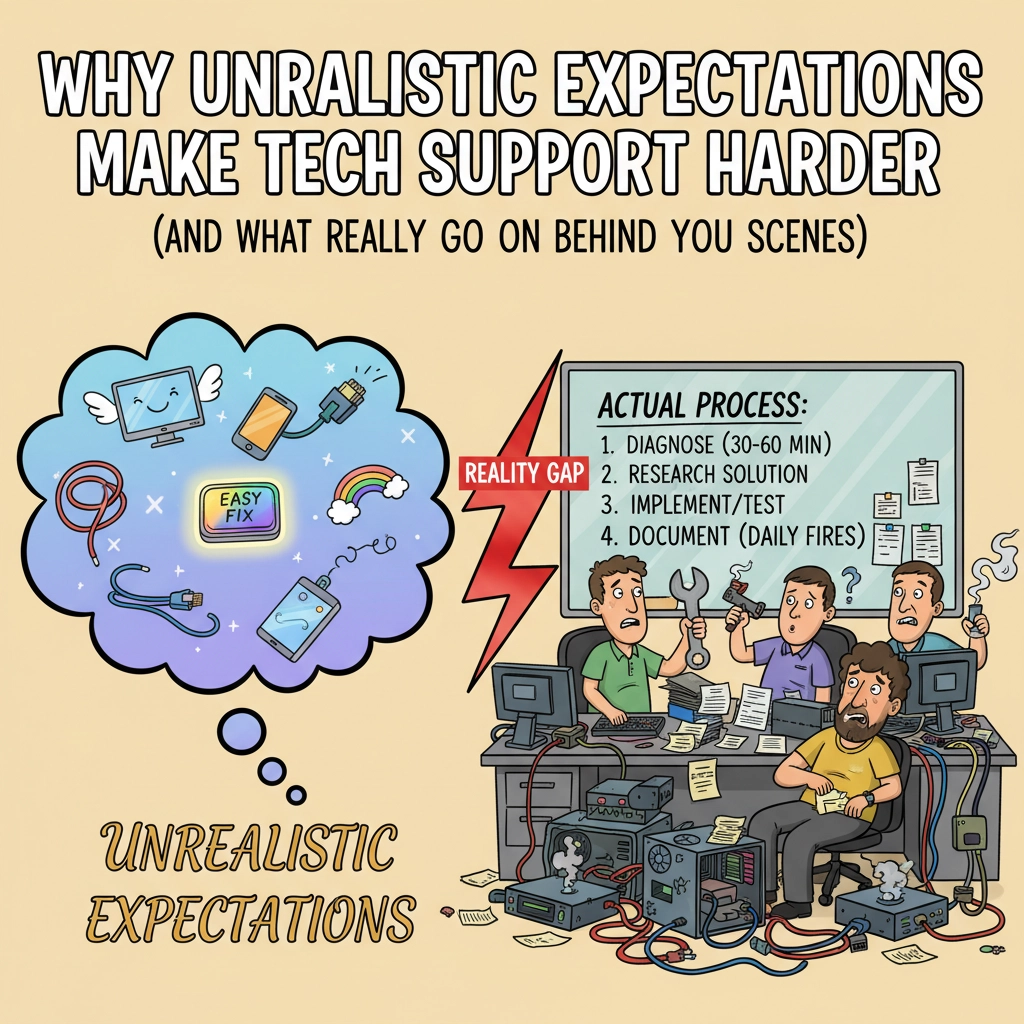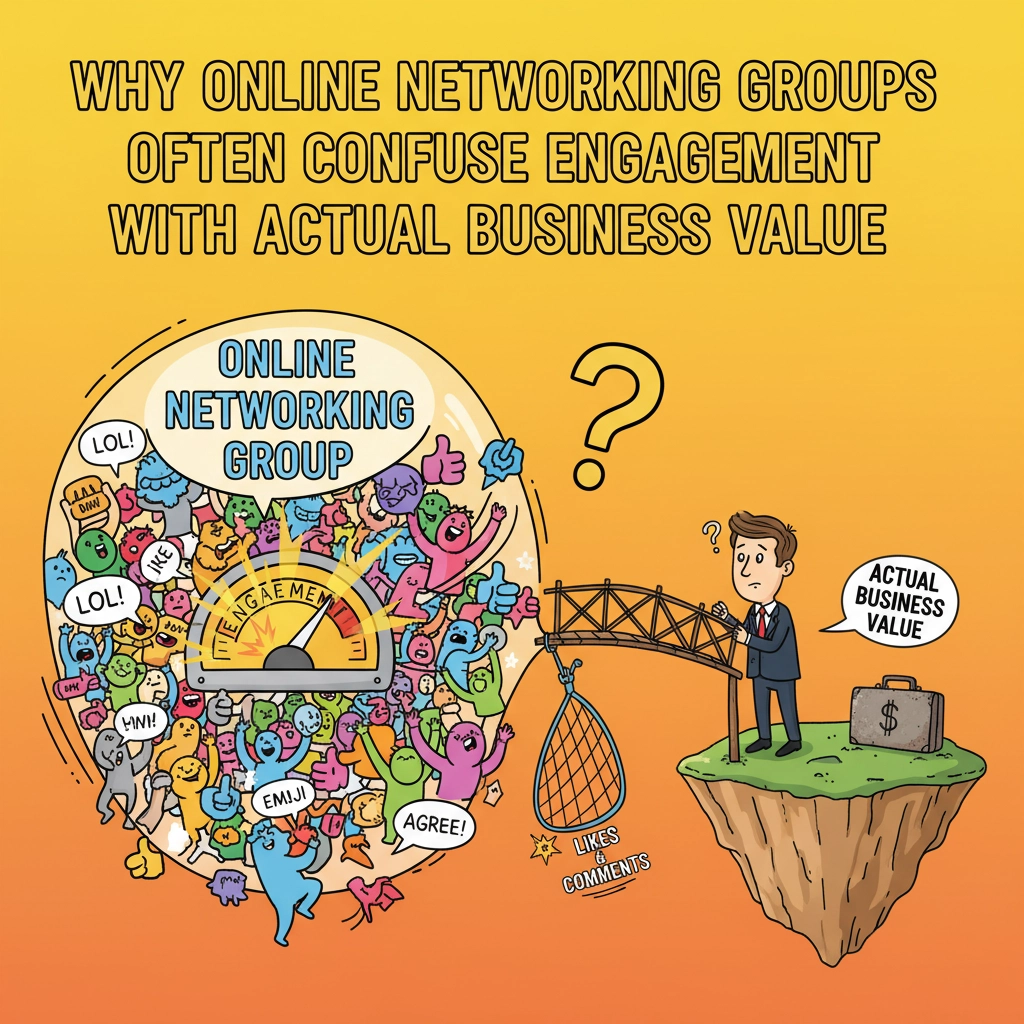The Interconnected Puzzle of Business Growth
Let's be real: There's a reason most new businesses don't make it past year five. It's not because their logo wasn't pretty enough or because they didn't try that one viral TikTok marketing trick. It's because sustainable business growth requires a complex, interconnected system where all the pieces work together.
Think about it like this: You wouldn't expect a car to run perfectly if you only maintained the engine but ignored the transmission, brakes, and electrical system. Yet somehow, many business owners pour everything into a shiny website or aggressive marketing campaign, then wonder why the sales aren't rolling in.
The truth? Building a successful business is about creating a cohesive ecosystem where each element supports the others. Let's break down why this holistic approach matters and how you can start piecing it all together.
Beyond the Façade: Why Your Website Isn't Enough
"If you build it, they will come" might work in baseball movies, but it's a recipe for failure in business. A sleek, professional website is undoubtedly important—it's your digital storefront. But it's just one piece of the puzzle.
Here's the reality check: The average website conversion rate is only about 2.35%. That means for every 100 visitors, less than 3 become customers. Why? Because a website alone doesn't:
- Generate its own traffic
- Build trust automatically
- Communicate your unique value proposition without strategy
- Convert visitors without proper user journey mapping
- Handle customer support and retention
I've seen countless businesses invest thousands in premium websites that sit like digital ghost towns because they didn't connect this piece to the rest of their business strategy.
Marketing Isn't Magic Either
"My marketing isn't working. I need to push harder!" Sound familiar?
Marketing is essential, but throwing more money at ineffective marketing is like turning up the volume on a bad song—it just makes the problem more obvious. Modern marketing requires:
- Clear understanding of your target audience
- Multiple channels working together (social, email, content, etc.)
- Consistent messaging across all platforms
- Data analysis and adaptation
- Integration with sales and customer service

When marketing exists in a vacuum, disconnected from your operational capabilities or customer experience, it creates promises your business can't fulfill. That leads to disappointed customers and wasted resources.
The Technology Foundation
In today's digital economy, your technology infrastructure is the backbone that supports everything else. Yet it's often the most overlooked aspect of business growth.
Consider these sobering statistics:
- 60% of small businesses that experience a cyber attack go out of business within six months
- The average cost of IT downtime is $5,600 per minute
- Employees waste an average of 22 minutes per day dealing with IT issues
Your business technology needs to be more than just "working computers." It needs to be secure, efficient, and aligned with your business processes. At Your Personal Ninja, we've seen how the right technology foundation can transform a struggling business into a growth machine—not because technology is magic, but because it removes friction from every other business system.
The Operational Engine
Operations—the systems and processes that deliver your product or service—are where marketing promises either come to life or fall apart. Yet many businesses treat operations as an afterthought.
Efficient operations:
- Reduce costs and increase margins
- Improve customer experience and satisfaction
- Allow for scalability without proportional cost increases
- Free up resources for innovation and growth initiatives
When your operations aren't optimized, throwing more marketing at the problem is like pouring more water into a leaky bucket. You might see a temporary uptick in business, but you're losing customers as quickly as you acquire them.
The Capital Reality: You Have to Spend Money to Make Money
One of the hardest pills for new business owners to swallow is that growth requires investment. The old adage "you have to spend money to make money" persists because it's fundamentally true.
Strategic investment areas for business growth include:
- Talent acquisition and retention: Quality team members who can execute your vision
- Technology and systems: Tools that increase efficiency and capabilities
- Marketing and customer acquisition: Strategic campaigns that target the right audience
- Product/service development: Continuous improvement based on market feedback
- Training and education: Keeping your team's skills current and competitive

The key isn't just spending money—it's investing strategically in areas that will provide the best return for your specific business. Sometimes that means upgrading your network infrastructure before launching a new marketing campaign, or investing in team training before adding new service offerings.
The Integration Challenge
The biggest challenge in growing a business isn't mastering any single aspect—it's integrating all these elements into a cohesive whole.
For example:
- Your website needs to reflect your operational capabilities
- Your marketing should only promise what your operations can deliver
- Your technology should support both your customer-facing and back-office needs
- Your financial planning should account for investment across all business areas
This integration doesn't happen by accident. It requires intentional planning, constant communication between departments, and regular evaluation of how each piece is supporting the others.
The Pivot Principle: When Something's Not Working
"Website not working? Fix it up and add in marketing. Marketing not working? Change it up and push harder."
There's wisdom in this approach, but with an important caveat: before you pivot, you need to understand why something isn't working. Otherwise, you're just guessing.
Effective pivoting requires:
- Data collection: What metrics show that something isn't working?
- Root cause analysis: Why isn't it working? Is it the execution, the strategy, or the market fit?
- Targeted adjustments: Making specific changes based on your analysis
- Measurement: Tracking whether your changes improve the situation
Sometimes what looks like a marketing problem is actually an operational issue. What seems like a website conversion problem might actually be a pricing or value proposition challenge. The ability to accurately diagnose and address the real problem—not just the symptoms—is what separates businesses that successfully pivot from those that spin their wheels.
The Strategic Growth Roadmap
So how do you actually piece all this together? It starts with a strategic growth roadmap that considers all aspects of your business:
- Assess your current state: Honestly evaluate where each aspect of your business stands today
- Identify your constraints: What's holding back your growth right now? Is it awareness, operations, technology, capital, or something else?
- Sequence your investments: Based on your constraints, determine which investments will unlock the most growth
- Build integration mechanisms: Create processes for communication and alignment between different business functions
- Implement measurement systems: Track how changes in one area affect others
- Review and adapt: Regularly revisit your strategy as your business evolves

Real-World Success: The Integrated Approach
Let's look at a quick case study:
A local professional services firm was struggling despite having a beautiful website and running regular advertising campaigns. After a comprehensive assessment, they discovered that while they were generating leads, their internal systems couldn't handle the follow-up efficiently. Leads were falling through the cracks.
Instead of doubling down on marketing (which would have wasted money), they first invested in a customer relationship management (CRM) system and trained their team on new follow-up processes. They also implemented email automation to nurture leads more effectively.
The result? Without spending an extra dollar on marketing, their conversion rate increased by 35%, and their customer retention improved by 20%. Only after fixing their operational issues did they gradually increase their marketing budget—now with the infrastructure to handle the growth.
The Collective Approach: Bringing It All Together
Growing a business truly is a collective effort. It requires:
- A clear vision that guides all business functions
- Strategic investment across multiple business areas
- Systems that ensure alignment between departments
- The flexibility to adjust when something isn't working
- The patience to build a strong foundation before scaling
At Your Personal Ninja, we've seen this pattern play out countless times. Businesses that approach growth holistically—addressing technology, operations, marketing, and strategy as an integrated system—consistently outperform those that chase quick fixes in isolated areas.
Moving Forward: Your Integrated Growth Plan
If you're serious about sustainable business growth, here's where to start:
- Conduct a holistic business assessment: Look at every aspect of your business objectively
- Identify your weakest links: What areas are most constraining your growth?
- Develop integration points: How can you better connect your website, marketing, operations, and technology?
- Create a prioritized investment plan: Where will you get the biggest return on investment right now?
- Build measurement systems: How will you know if changes in one area are positively affecting others?
Remember, successful businesses aren't built on one perfect element—they're built on systems where each element strengthens the others. Your website, marketing, operations, technology, and team all need to work in concert to create sustainable growth.
The businesses that thrive aren't necessarily the ones with the flashiest websites or the biggest marketing budgets. They're the ones that understand how all the pieces fit together, invest strategically across their organization, and build integrated systems that support their growth objectives.
After all, in business as in life, it's not just about having the right pieces—it's about how well you connect them that makes all the difference.
Ready to take a more integrated approach to your business growth? Explore our services to see how we can help you build the technology foundation that supports all aspects of your business.
Share this:
- Click to share on Facebook (Opens in new window) Facebook
- Click to share on Tumblr (Opens in new window) Tumblr
- Click to share on X (Opens in new window) X
- Click to share on Pocket (Opens in new window) Pocket
- Click to share on Pinterest (Opens in new window) Pinterest
- Click to share on LinkedIn (Opens in new window) LinkedIn




